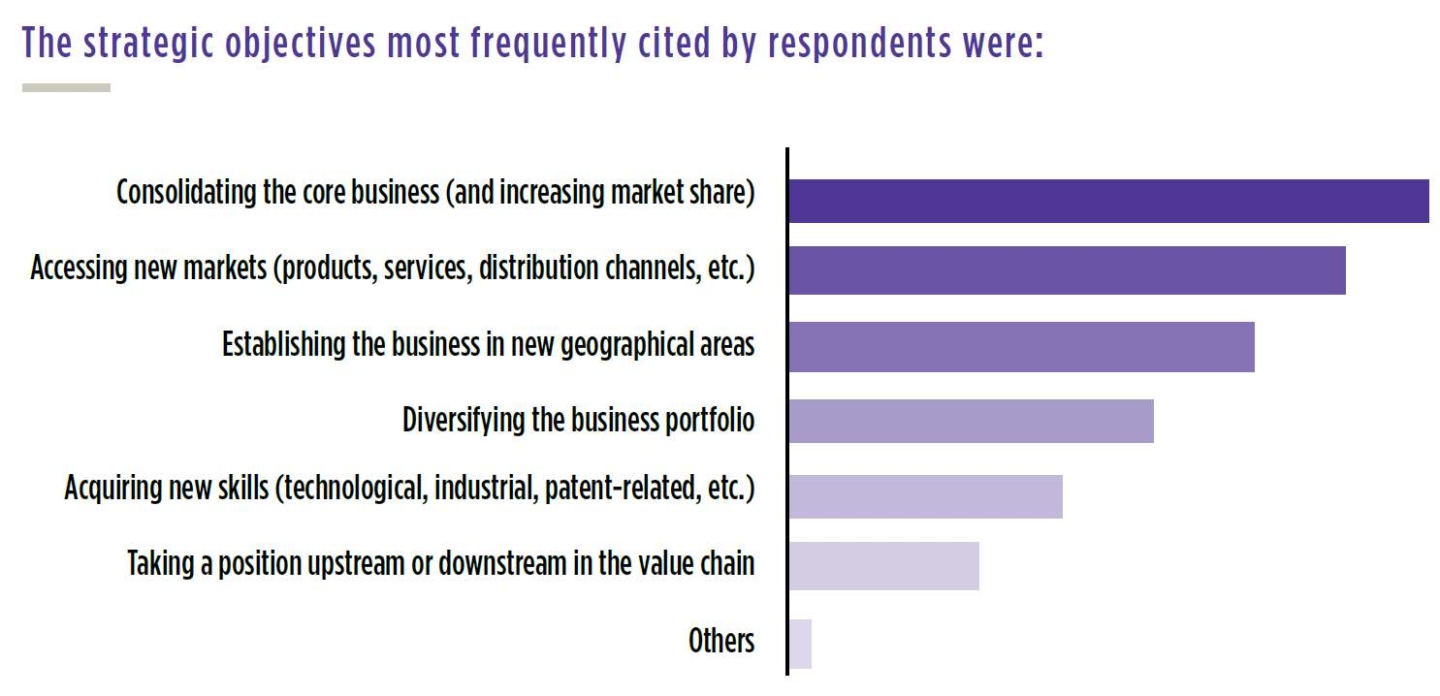In increasingly competitive and global markets, many companies continue to pursue external growth as a means to strategic development. In fact, France’s mergers and acquisitions (M&A) market has returned to pre-crisis levels—with more than 1,500 transactions in 2018.
But, despite this high number of fusions, companies should not underestimate the complexity involved in merging businesses (in terms of synergies, structural and cultural changes, etc.), something that must often be achieved to short timescales and by management and operational teams that rarely have significant experience of what’s needed. It’s clear that such high-stakes exercises are still often poorly executed: only 40% of them create the expected level of value. What makes these mergers so challenging? And how can such challenges be overcome?
To answer these questions and help inform decision makers, Wavestone’s teams interviewed over 100 business leaders who have taken part in such exercises.
By analyzing the results of this survey and gathering other relevant project feedback from Wavestone experts, we’ve identified the main reasons for failure but also the good practices and critical success factors in three key areas of post-acquisition integration programs:
// Integration strategy and merger process steering,
// Technological integration,
// Change management.
In this insight, we present the results and main learning points from the study.
Mergers : context and issues
After a difficult period during the financial crisis (where the value of deals fell to €69bn in 2010, compared with €166bn in 20011), the M&A market has again seen high levels of activity in recent years. In 2018, in France, there were over 1,500 mergers—with the associated investments totaling over €140bn2.
By pursuing such fusions, companies aim to meet one or more of their strategic objectives, in particular consolidating their core business (for 77% of respondents), accessing new markets (for 67%), and establishing themselves in geographical areas (56%).
Usually complicated (as a result of a requirement to achieve synergies, develop organizational structures, support cultural harmonization, etc.), and with a need to deliver to tight timescales while ensuring business continuity, Post-Merger Integration (PMI) is one of the most difficult challenges a business leader may have to face.
A relatively rare event in a leader’s career, it requires responses and approaches that are quite different from those deployed in day-to-day management. And it’s clear that such high-stakes exercises are still often poorly executed and struggle to generate the value expected. In fact, only 40% of respondents in our survey said they had met or exceeded their return on investment (ROI) targets.
// What are the challenges associated with merger operations?
// What distinguishes mergers that achieve their ROI objectives from those that fail to do so?
// What are the keys to delivering a successful merger?
These are the questions we set out to answer in this study, and to which we provide some of the answers.




